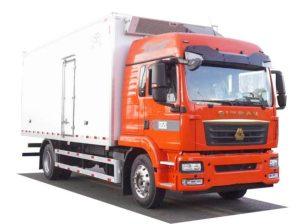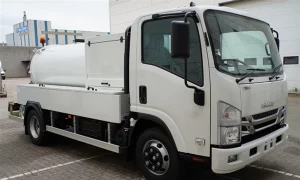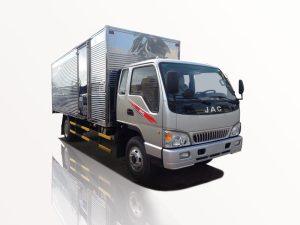Monday to Saturday - 8:00 -17:30
How Many Miles Can a Vehicle Travel? A Comprehensive Guide
Understanding vehicle mileage is crucial for both prospective buyers and current owners. From understanding specific models to general vehicle dynamics, this guide will help you explore how many miles different vehicles can travel under various conditions.
Table of Contents
- 1. Factors Affecting Vehicle Mileage
- 2. Types of Vehicles and Their Average Miles
- 3. How Driving Habits Impact Mileage
- 4. Maintenance and Its Role in Mileage
- 5. Real-World Mileage Examples
- 6. Tips to Improve Vehicle Mileage
- 7. FAQ Section
1. Factors Affecting Vehicle Mileage
There are numerous factors that can significantly influence how many miles a vehicle can travel before needing to refuel or service. Some of these factors include:
1.1 Engine Size and Type
The size of the engine directly correlates with fuel efficiency. Larger engines usually consume more fuel, while smaller engines are generally more efficient.
1.2 Weight and Load
Heavier vehicles require more energy to move, which can lead to a decrease in mileage. Loading your vehicle affects its overall weight, thus impacting range.
1.3 Terrain and Climate
Driving in hilly or mountainous terrain can reduce fuel efficiency compared to driving on flat, smooth roads. Similarly, cold weather can negatively impact mileage due to increased fuel consumption during cold starts.
1.4 Tire Condition
Proper tire maintenance is essential. Under-inflated or worn tires can decrease fuel efficiency and mileage over time.
1.5 Driving Style
Acceleration, braking habits, and speed can greatly affect mileage. Smooth driving tends to yield better fuel efficiency.
2. Types of Vehicles and Their Average Miles
The type of vehicle you drive significantly impacts how many miles it can travel. Below are average mile ranges for various vehicle types:
| Vehicle Type | Average Miles on a Full Tank | Fuel Efficiency (MPG) |
|---|---|---|
| Compact Car | 350-450 miles | 28-35 MPG |
| SUV | 300-400 miles | 20-25 MPG |
| Full-Size Truck | 400-600 miles | 15-20 MPG |
| Electric Vehicle (EV) | 250-350 miles | Energy Equivalent: 4-6 miles per kWh |
3. How Driving Habits Impact Mileage
Your daily driving habits can lead to significant differences in how far your vehicle can travel:
3.1 Smooth Acceleration and Deceleration
Avoid rapid starts and stops. Gradually accelerating and decelerating can enhance your vehicle’s mileage.
3.2 Consistent Speed
Maintaining a steady speed is more fuel-efficient than frequently changing speeds. Using cruise control on highways helps with this.
3.3 Planning Routes
Planning your route with the least amount of stops can help maximize travel distance. Avoiding congested areas can also improve mileage.
4. Maintenance and Its Role in Mileage
Regular maintenance plays a significant role in maximizing how many miles you can drive:
4.1 Regular Oil Changes
Maintaining fresh oil helps keep your engine running smoothly, improving fuel efficiency.
4.2 Replacing Air Filters
Dirty air filters can restrict airflow and decrease efficiency. Replacing them can boost mileage.
4.3 Tire Maintenance
Regularly checking tire pressure and alignment helps ensure optimal performance and mileage.
5. Real-World Mileage Examples
Understanding how much mileage different cars can achieve in various conditions can be insightful:
5.1 Example: City Driving
In urban areas, compact cars average around 28 MPG, while SUVs may drop to about 20 MPG due to stop-and-go traffic.
5.2 Example: Highway Driving
On highways, compact cars can reach as high as 35 MPG, while larger trucks might only reach 20-25 MPG, showing a stark difference based on driving conditions.
5.3 Example: Long-Distance Travel
Vehicles that are well-maintained on a long trip can achieve their maximum mile potential, sometimes exceeding manufacturer estimates.
6. Tips to Improve Vehicle Mileage
Enhancing your vehicle’s efficiency can prolong its mileage capacity. Here are some effective tips:
- Keep tires inflated to the recommended pressure.
- Remove unnecessary heavy items from your vehicle.
- Use air conditioning sparingly.
- Choose low-rolling-resistance tires.
- Utilize fuel-saving apps to find the best prices.
7. FAQ Section
7.1 How many miles can a gasoline vehicle typically travel on a full tank?
Most gasoline vehicles can travel anywhere from 300 to 600 miles on a full tank, depending on the tank size and fuel efficiency.
7.2 What is the average mileage for electric vehicles?
Electric vehicles typically range between 250 to 350 miles on a full charge, although this varies by model.
7.3 How does terrain affect vehicle mileage?
Driving in hilly or mountainous areas can negatively impact fuel efficiency due to the increased power needed to ascend.
7.4 Do maintenance practices really impact mileage?
Yes, regular maintenance such as oil changes and tire pressure checks can significantly improve your vehicle’s fuel efficiency.
7.5 What driving habits are worst for fuel economy?
Aggressive driving, frequent acceleration and braking, and high speeds are among the worst habits for fuel economy.
7.6 Can aftermarket parts improve vehicle mileage?
Some aftermarket parts, like performance chips and low-rolling-resistance tires, can improve mileage, but results may vary.









